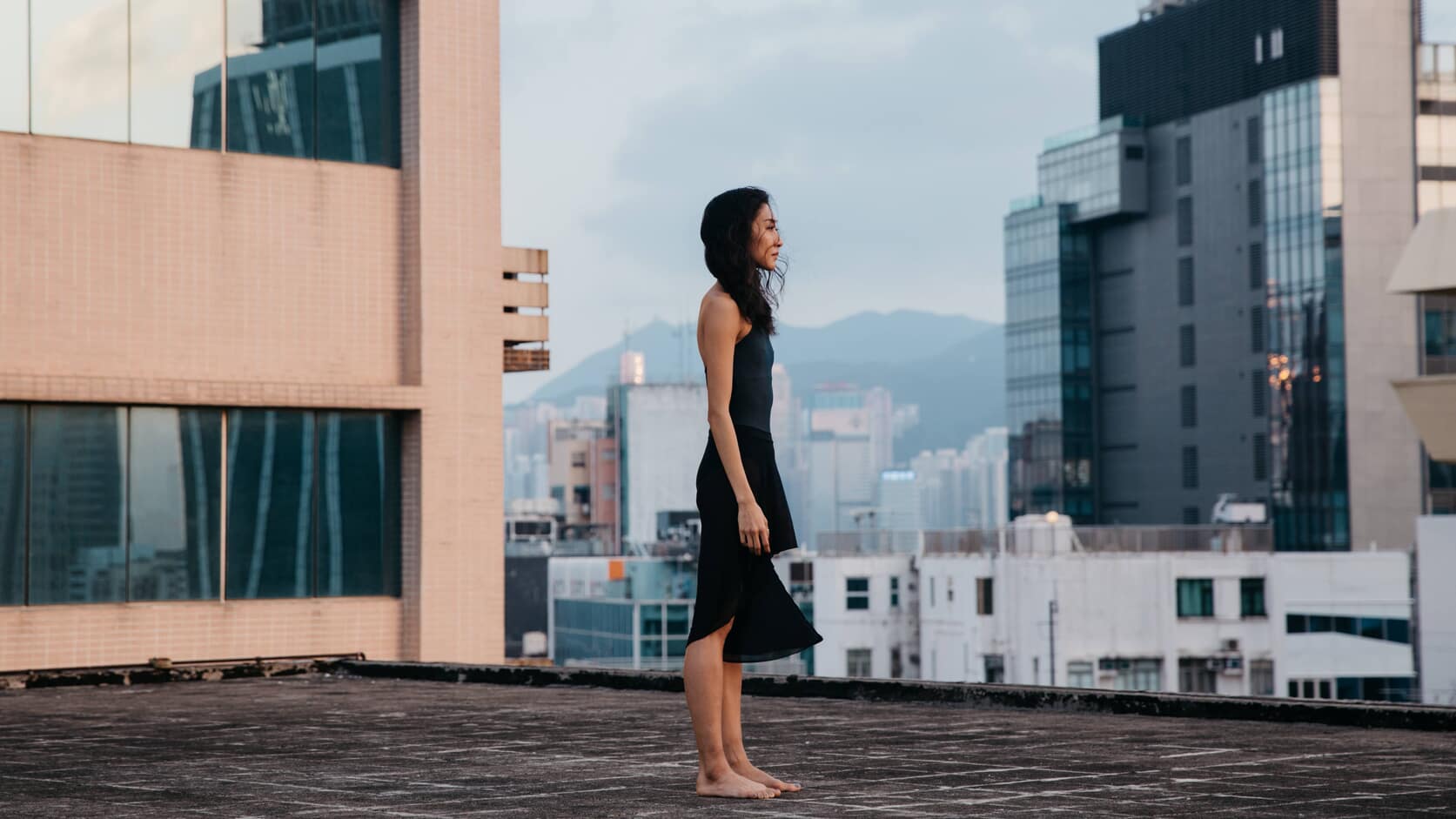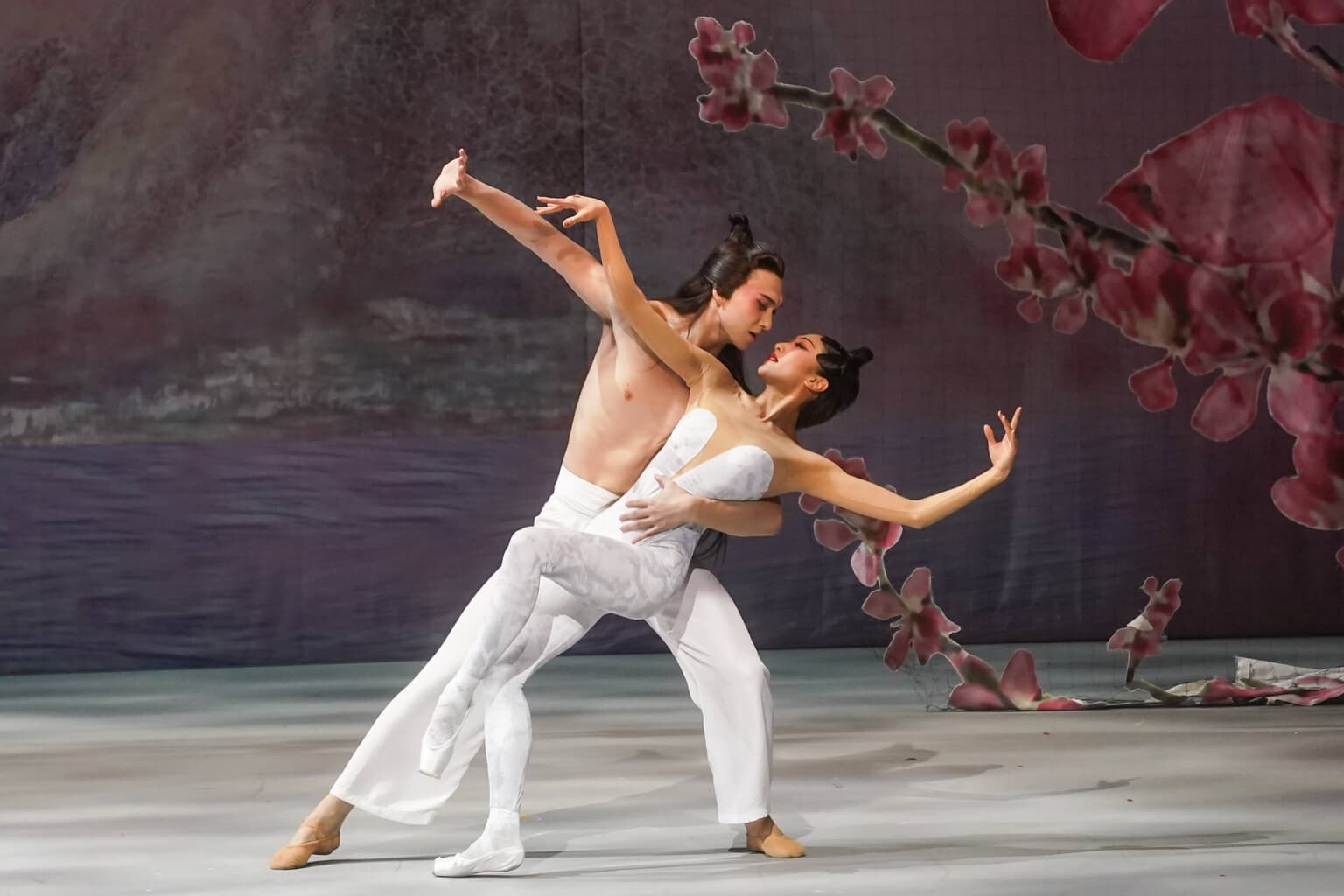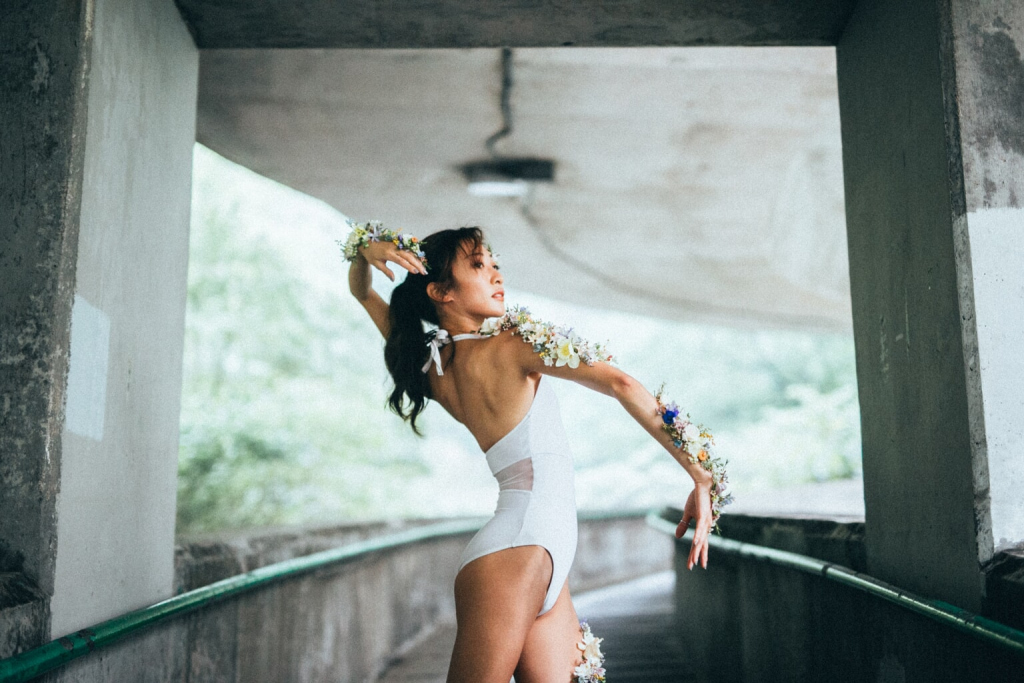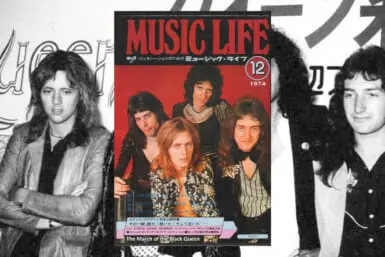Reina Sawai is a ballet dancer and a globe-trotter: Born in Wellington, New Zealand, she has trained in Japan, the Philippines, Hong Kong and Portugal and danced professionally with ballet companies in Europe and beyond. She began ballet classes when she first lived in Japan at the age of four. As her mother was a piano teacher at the time, there was a great deal of music in Sawai’s childhood home.
After stints with the National Ballet of Portugal, the Vienna State Ballet and the Boston Ballet, she joined the Hong Kong Ballet in 2019 as a coryphée, a ballet dancer who dances both in a small group and in the corps de ballet, or as a soloist. As a coryphée, Sawai takes on mostly solo roles along with corps de ballet work. In 2022, she was nominated for Outstanding Performance by a Female Dancer at the Hong Kong Dance Awards for her elegant interpretation of the White Snake, a Chinese mythological creature, in the reimagining of The Nutcracker directed and choreographed by Septime Webre.
Tokyo Weekender spoke with the ballerina online, and she opened up about identity, representation and her love-hate relationship with pointe shoes.

How would you describe “home”?
Home would definitely be Japan, but there can be multiple layers to the answer for me. By blood, I am 100 percent Japanese. Both of my parents are Japanese, and both of them — as well as the closest people to my heart — still live in Japan. Usually, when we have a four-week break in the summer, I go back there.
But at the same time, the longest I’ve lived in Japan was from age 12 to 18, so home might shift for me. I’m at the age where I’d like to settle somewhere instead of moving around every three or four years, and I can see myself settling here in Hong Kong. I don’t want to speak too soon, but one day, Hong Kong may be home for me.
How does living in Hong Kong compare to everywhere else you have lived in the world?
Before going to the States, everyone would ask me, “Are you American?” or “Did you live in the States?” or “Where did you grow up in the States?” And that’s how I felt about myself. But living there for three years, I felt very Asian. When I visited family in Japan during the summer, I felt like I didn’t exactly fit in with the local crowd, either. So there was always a conflict within me.
Living in Hong Kong now — that it’s an international hub of Asians and other foreigners is what I love about this place. I feel like I fit in because it’s such a mix of cultures and people. Maybe I don’t identify 100 percent as a Japanese woman, but I definitely identify as an Asian woman. So, in that sense, I feel very much at home here, like I’m accepted. I didn’t realize until I had left Boston, and it wasn’t really blatant and in-your-face, but there was a slight bit of racism. And that’s something I definitely don’t feel here, and that’s resulted in me feeling really comfortable and at home.

As a professional Asian ballet dancer, what does diversity in the world of ballet mean to you?
I think that there is a big lack of women, especially Asian women, in leadership positions within ballet companies. Obviously, it’s a female-dominated world, with roughly 60 percent female and 40 percent male dancers. But for some reason, there is a lack of female artistic directors and ballet company CEOs, especially Asian female CEOs. That’s weird because most of the artistic directors are ex-dancers and they come from the same pool of people.
There is also a lack of Asian female choreographers. We have fewer Asian female choreographers to begin with, but only a few of them are given chances to present their work on a big stage, like a big opera house in Europe, for instance. That’s where I see a lack of diversity, not within the dancers but within other positions in the ballet industry.
I’m a big advocate of standing up for minorities, and I feel like a minority myself, being an Asian woman. And the realization that I feel at home here and the gap between that and how I felt less comfortable in other situations makes me want to make a change.

What’s the hardest part of being a ballet dancer?
I’ve struggled a lot with injury. Yes, there are things you can do to prevent injury, but sometimes, it’s not in your control. And when that happens, it’s a big stab to your heart. I’ve been injured quite a bit, and the longest I’ve stayed out of the studio due to an injury is three months. It feels really long, a quarter of a year, and you definitely miss out on a lot of performances.
Can I tell you a secret? I also don’t like pointe shoes at all. When I took a gap year after Vienna, I was actually working at a beach resort. One of the things that made me the happiest was the fact that I did not have to wear pointe shoes ever again because I had no intention of going back to ballet at that point. I do have to wear them now, but I’m not smiling on the inside when I do. But it’s something that comes with the job, and I understand that it looks prettier with the pointe shoes.
So, there was a time when you lost your passion for ballet?
After living in Vienna in 2014, I actually went through a bit of depression. I think that was a result of just not liking the country. People say it’s a beautiful place to go as a tourist, but living there was difficult for me. The weather, culture and language were different, and the architecture in the city didn’t inspire me. I didn’t feel alive or happy there as a 20-year-old, and it affected my work. I still loved ballet, but somehow, I was feeling like I didn’t want to keep doing it. Even though work was going well for me, I didn’t know what I was doing there in Vienna.
The passion did go away once, and then I ended up taking a break and doing a completely different job. But I still had the passion within me, because I was able to come back to ballet and reignite it once again.

What’s your favorite ballet that you have danced?
One of my most favorite pieces to dance was in Boston, a piece that was choreographed by William Forsythe. Forsythe is a choreographer who does a lot of neoclassical pieces, somewhere in between classical and contemporary. I actually had full gray body paint — even on my ears. It was an improv piece with a vague structure, so it was mostly left up to my interpretation. I really enjoyed that, especially since I was able to dance barefoot or with soft shoes, and that gave me more freedom to express myself.
Another piece I loved was “Pas/Parts,” also by Forsythe. This one was in pointe shoes, but there was an improv section. It was a three-minute dance, but somewhere in between you were supposed to improv. So that required even more concentration because you had to freestyle but recognize the music cue and go back to the choreography. I liked the challenging aspect of it. One of the reasons I like ballet is because it’s challenging, and improv adds another layer to that.
What do you think we will see more of in the future of ballet?
I hope there will be more diverse ballet performances. A lot of the famous ballets are based on old stories. Our artistic director has directed different ballets, like Alice in Wonderland, The Great Gatsby and more modern stories or uncommon fairy tales.
I also hope ballet becomes more approachable for people. Ballet originates in France’s royal courts, and it’s a sophisticated art. But I think most people feel too intimidated to go see a ballet. The tickets are not cheap, either, but there is the option of standing seats in Europe that you can buy for €10. Ballet should be more accessible to people in a sustainable way.









